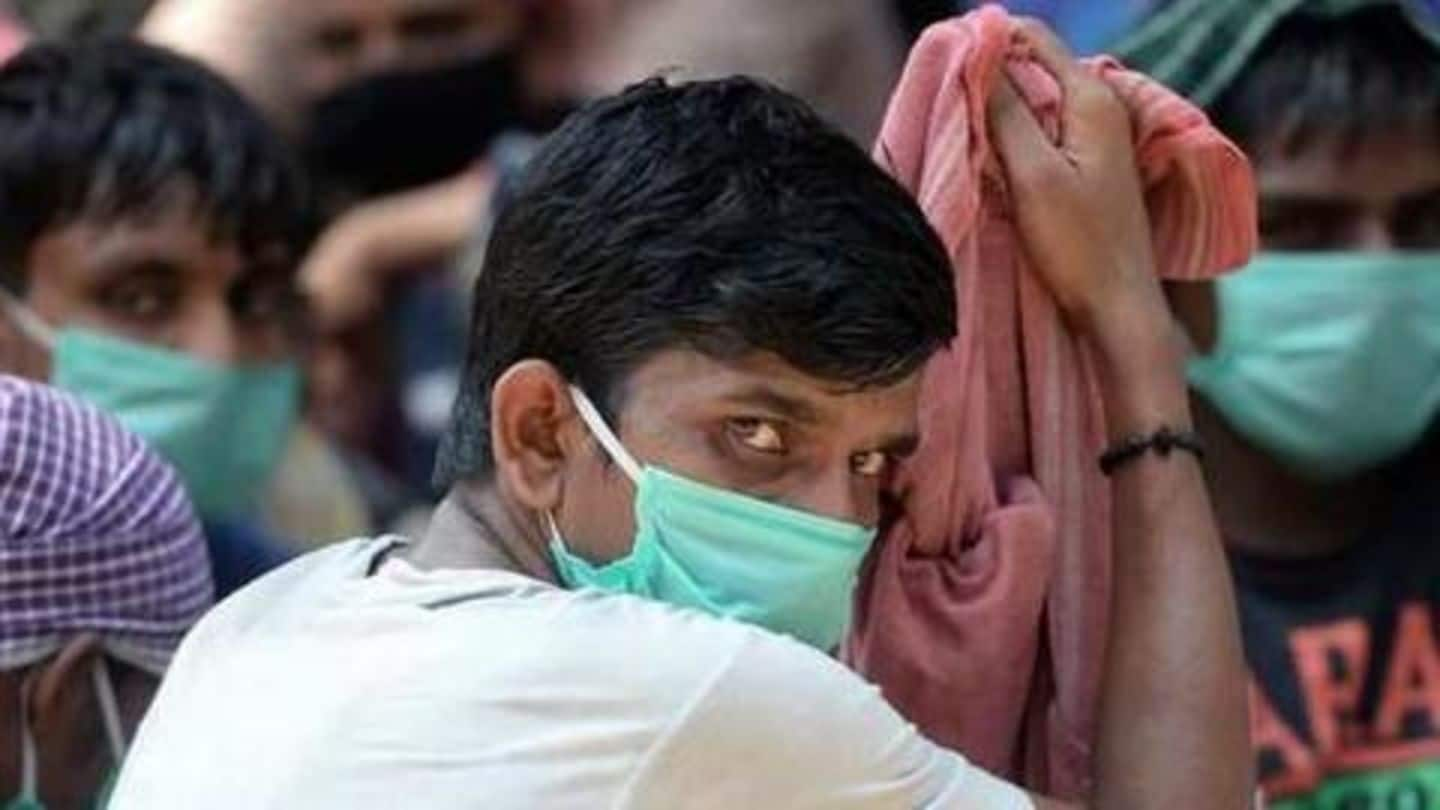
Did India's lockdown really save lives?
What's the story
The 1.3 billion population of India was put under an unprecedented lockdown in March, to reduce the transmission of coronavirus. By Thursday, the number of COVID-19 cases in India stood at 2.2 lakh with over 6,000 deaths. The government said the timely measures helped save lakhs, but a working paper by two economists pointed out that the restrictions had a catastrophic effect on lives.
Report
Two economists tried understanding India's lockdown and its aftermath
Titled <Strong>Interim Report on India's Lockdown, the report is authored by economists Debraj Ray, who teaches at New York University, and S Subramanian, a retired professor of Madras Institute of Development Studies. The study was submitted to the National Bureau of Economic Research (NBER), an American non-profit research agency. They analyzed the thought behind the lockdown, its effects, and judged the government's response.
Findings
Paper explained difference between developed countries and India's lockdown
The paper argues that in rich countries the lockdown was a result of "enormous visibility" of COVID-19 fatalities and the restrictions led to a dramatic dip in deaths. But in India, a developing nation with great "sectoral and occupational vulnerabilities," the lockdown had other repercussions, implying more lives were lost. Those who died as a consequence of the lockdown remained invisible, they added.
Suffering
Lockdown turned migrant workers' lives upside down, many died
With the beginning of lockdown on March 25, the exodus of migrant workers started too. They hitched rides on trucks, rode bicycles, and those who weren't as lucky walked thousands of kilometers on foot. The Shramik trains, which were started just last month, weren't less fatal either. According to Railways officials, 80 workers died on these special trains between May 9 and May 27.
Deaths
Deaths due to other factors will remain invisible, authors lamented
The authors wrote starvation, debt, violence, and stress would take lives. "Someone will die of suicide. A woman will be killed in an episode of domestic violence. The police might beat a protestor to death. The deaths will occur not just now, but months and years from now, as mounting starvation and indebtedness and chronic illnesses take their collective toll," they added.
Vulnerability
With lockdown, a relief package was needed too
Moreover, they didn't seem content with the Rs. 20 lakh crore aid either, writing, "The lockdown meets all international standards so far; the relief package none." The authors explained that in the absence of a package, lakhs became vulnerable. They explained this with three structural features. The first one being casual labor, which accounts for over 20% of Indian households. "Such individuals are particularly vulnerable," they wrote.
Reasons
Median households don't have a lot of savings, they added
The second factor, which highlighted why Indians were more vulnerable, was the "preponderance of informal production," said the authors. More than half of India's GDP is produced in the informal sector and it can't be taken online swiftly. Thirdly, the savings of median households are low and not enough to sail them through if their primary breadwinner loses their job, they pointed out.
Suggestions
India shouldn't think about another lockdown: Subramanian
With ICMR suggesting that India's peak isn't near, there is a fear that strict curbs will return. Subramanian said this is a "worse idea" than the first bout of restrictions. He reminded that the lockdown cost lives, left people unemployed, and dried up their savings. If the government was to intervene that way again, Subramanian said some measures need to be taken.
Suggestions
He said the government must repair supply-side problems
The economist said the government should "spend substantially more on compensating relief measures, raise more resources through rudimentary taxation of the wealth of the super-rich, and not rely predominantly on supply-side strategies such as liquidity expansion involving the channeling of credit through banks". Further, steps must be taken to fix supply-side problems, he said, pointing out that mobility's restrictions must be eased.
Details
Talk with specialists, opposition politicians, he suggested
Saying that the federal government must work closely with states, he said at least their GST dues must be settled. The government must also engage with a panel of public health specialists, epidemiologists, social workers, economists, other social scientists, trades unions, and opposition politicians. Lastly, the government must take steps to address both the epidemiological and social security problems, he told HT.
Lockdown
It's still early to say lockdown didn't yield results
It's important to highlight that the Interim Report on India's Lockdown is a working paper, hence, it's inconclusive. It might be too early to opine that the lockdown didn't serve the purpose. Now that the unlocking phase has started, India is staring at a long path, as far as economic recovery is concerned. But Prime Minister Narendra Modi is optimistic India will bounce back.